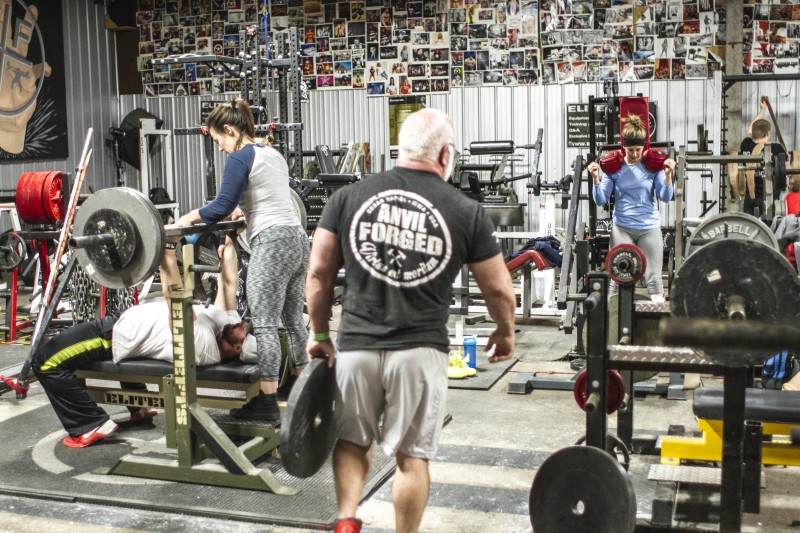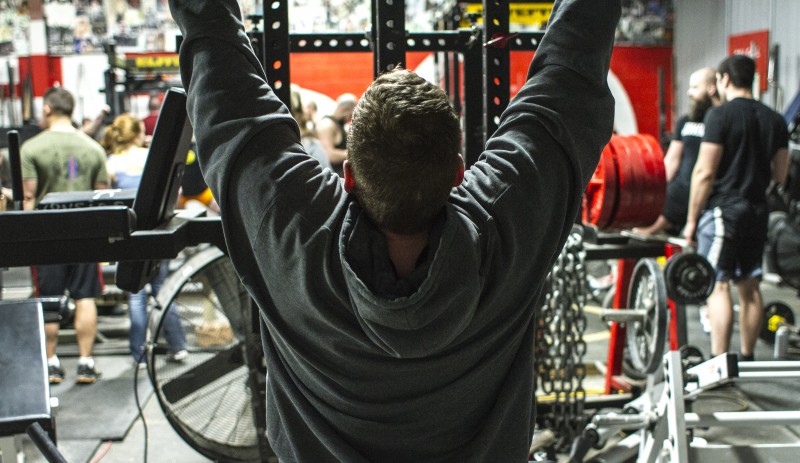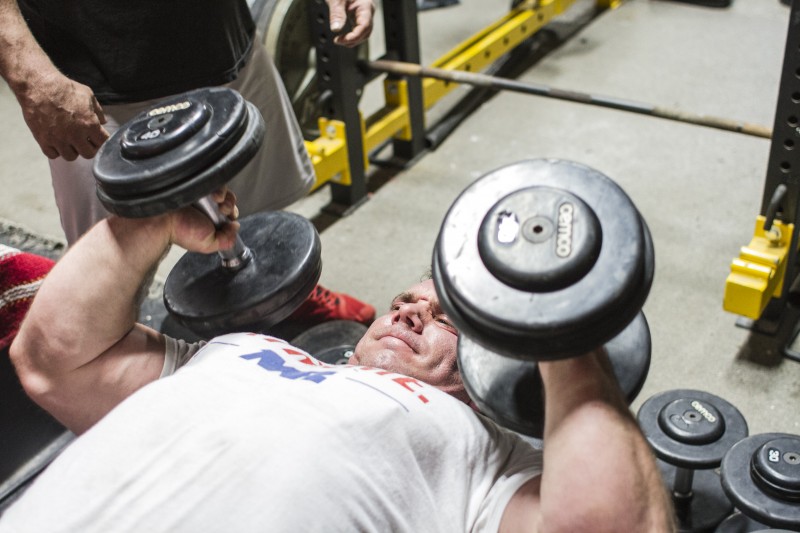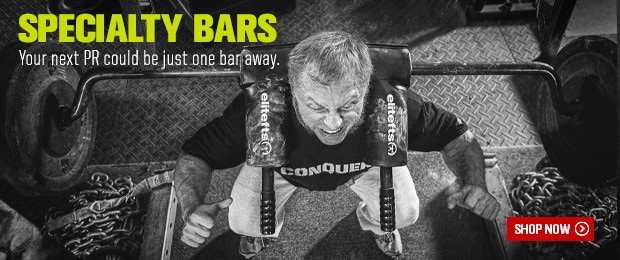
87% of my “lifting career” has been entirely focused on building muscle, burning fat, and chasing what I deem to be my "ideal physique." While I’m not anywhere close to where I want to be, I’ve moved closer and closer by the year, made plenty of mistakes along the way, experimented, and learned many things about bodybuilding and building muscle that I know to be true beyond reproach.
Be warned: I’m not talking about weird training hacks guaranteed to “build 15 pounds of lean muscle in just six weeks” or “burn 10 pounds of fat this week by eating one superfood.”
No, I’m talking about underlying training principles that contribute to keeping your body healthy, growing, recovering, and building muscle over the long-term (because that’s how muscle is truly built, no matter what the latest supplement ad may tell you).
RECENT: 5 Training Hacks for Underdeveloped Hamstrings
I’m not saying that these principles are the be-all, end-all of muscle-building, or the silver bullet you’ve been looking for. But, I can promise you that if you ingrain these principles into your mindset and into your training, you will see muscle-building, fat loss, and physique development success.
As surely as I know I love training legs, below you’ll find 14 things about bodybuilding and building muscle that I know to be true.
1. Tissue takes time.
Muscle growth doesn’t happen overnight. The sooner you take this to heart, the sooner you’ll stop being frustrated with how long it takes to see progress. Muscle isn’t built over days or weeks. Instead, you need reps upon reps, compounded over months and years. Bodybuilding is unique in that it is the only sport in which you improve with age (provided you stay healthy, consistent, and care for your joints).
If you want to build the physique you’ve been dreaming of, get ready for a long plod, not a sprint. Success will come through focusing on the process of improving each day and seeing yourself change over the long haul.
2. Strength plays a role, but it need not be your focus.
Nobody gives a flying fuck about any of the following:
- How much you used to lift.
- Your leg press one-rep max.
- How much weight you can pile on the bar and move with plenty of assistance and/or through an embarrassingly small range of motion.
[Note: In case you can’t tell, I’m not speaking to powerlifters here.]
When it comes to bodybuilding, your 1RM doesn’t stand for anything. Nobody cares, truly. In my eyes (and the eyes of many), a heavy load is only impressive when it’s moved under muscular control. I’m talking about crisp, clean, smooth reps. Muscle does require having a base of strength, but little more. And you can absolutely continue to get stronger, without making it your main focus or trying to max out every single session.
3. Recovery matters over all else.
I had the fortune of being exposed to some utterly brilliant training minds when I was first getting my feet wet in the fitness industry, most notably John Meadows, Mike Demeter, and Charles Poliquin. To this day, I’m immensely grateful that I stumbled upon these three, and didn’t get sucked into the useless drivel that pervades the fitness circles.
It was Mike Demeter who said the following to me, and in that moment reshaped how I approached training forever:
“Your recovery dictates your results.”
“You can only push as hard as you can recover.”
Between those two quotes, I immediately understood the importance of recovery and why the majority of lifters would do much better to focus on improving recovery over trying to annihilate themselves in each training session. I took both to heart.
The bottom line is that if you’re not recovering sufficiently, you’re not going to grow.
4. Chase the pump.
As science is finally starting to finally to support, Arnold was onto something with his love of chasing the pump.
“It’s as satisfying to me as, uh, cumming is, you know?”
While the pump isn’t necessarily an indicator of growth, it is a nod to an effective training session. Furthermore, being able to attain strong, lasting pumps during your training sessions is a sign of good health, as you can’t achieve said pump without being hydrated, having balanced electrolytes, strong blood flow, or training with focus.
Then there’s the mind-muscle connection piece of the puzzle. Simply put, if you can’t flex and contract a muscle, you’re not going to be able to effectively stimulate said muscle during training — nor will you be able to achieve an oh-so-satisfying, skin-splitting pump.
5. Increase your training frequency.
Increasing your training frequency is one of the lowest hanging fruits you can grab when trying to improve a specific body part.
In the interest of accelerating your progress, increasing training frequency is the simplest change you can make that will yield the greatest results. Spreading 40 sets out over three sessions has been shown to be far effective than a singular session of 40 sets run through once per week.
It’s within manipulating your training frequency where the key to body part specialization also lies. Not only is upping your training frequency a surefire way to build more muscle in general, but you can also use this same principle to run weak and/or stubborn body parts through a specialization phase.
6. Sometimes you have to put a joint or lever in a disadvantageous position to blast a muscle group.
This is something else I learned this from my first mentor in the physique game, Mike Demeter. To loosely quote Mike, “Sometimes effectively stimulating the target muscles means placing joint in a disadvantageous position.”
I do not suggest doing anything of the sort if you’re not an advanced trainee, know your limits, and are capable of safely executing this technique.
Rather than telling me what to do, Mike walked me over to the incline bench and had me internally rotate my hands. This had the tips of my fingers facing one another, with my elbows flared out wide. Adding no weight to the bar, he had me lower the bar towards my upper chest in an otherwise traditional incline bench press.
Years later, I can still feel the soreness I experienced from doing four sets of 10 with next to nothing on the bar.
7. The quality of your reps (and sessions) matters much more than the quantity.
The “quality over quantity” school of thought is a mindset and one that only a blessed few naturally possess. Personally, I preach quality over quantity in everything I do. To that end, bodybuilding is no different and neither are the sets and reps that make up your training sessions. I can all but guarantee that you’ll get better results with three high-quality sessions per week than you will with five low-quality sessions.
Place your focus on eliminating “junk” volume from your sessions, dial back how often you train if you’re regularly half-assing sessions, and focus on crisp, focused sessions. The tide of your results will soon turn in your favor.
8. Everything works until it doesn’t.
This is a cliché and dated saying, but only because it’s so damn true. Literally, everything you do in the gym will work for a time, and then it won’t.
Much of the magic in continually progressing (and this is often the difference between those who do progress and those who don’t), lies in your ability to determine the point where what you’re doing has run its course, and the time has come to switch gears. As a general rule of thumb that will serve the majority of you meatheads well, stick to a program for four to six weeks, and then change it up. I have yet to work with anyone who hasn’t benefited from doing so.
Furthermore, keep in mind that what once worked for you, may not work again. If you’re entertaining the notion that you’ll switch away from a program which you absolutely blew up on, then come back to it in two to three months expecting to blow up once more, chances are you’re sadly mistaken.
Lastly, don’t beat your head into the wall trying to make something work when it clearly isn’t.
9. Consistency trumps all.
Whenever I’m asked for my number one tip, or what one thing anyone can do to get better results, consistency is always my answer. Every. Single. Time.
Consistency is the “one weird secret” to burning fat, building muscle, getting stronger, and ultimately building the impressive physique that you’re chasing. The issue people have with consistency, though, is that it’s not a sexy, shiny answer. It’s a dull, blunt, and gray principle that takes time and effort to ingrain into your mindset, habits, and actions. Consistency requires you to think in terms of months and years, not days and weeks.
Consistency is a shift in your mindset that will keep you improving day-by-day, session-by-session. Because that’s exactly how you become consistent.
10. Anabolics aside (and even then), there is no silver bullet.
In the context of building muscle, getting shredded, or building superhuman levels of strength, there is no silver bullet that will help you get there quicker. If you’re looking for a silver bullet to muscle growth, you need to fix your mindset. There is very little you can do to accelerate the process outside of nailing the points on this list. Even anabolics won’t do it (especially if you lack consistency).
11. Use the law of specificity.
It’s almost amusing how many lifters will claim their goal to be one thing, but their actions speak another. This disconnect between knowing what you want to achieve and knowing what to do in order to achieve said goal is one of the most common culprits for making little to no progress.
The law of specificity dictates that every action, every decision, and every step are all conducive to your end goal. Are you trying to get shredded for summer? You’re going to have to go into a calorie deficit. No matter how appealing that plate of donuts looks. Are you chasing bigger arms? Then starting training your arms more, and everything else less (yes, that will mean less chest work).
When you use the law of specificity in conjunction with high-frequency programming, you can work absolute wonders on small and/or weak body parts. To compound this law and make it even more powerful, lead your sessions with the muscle or focus that needs the most work.
This simply works.
12. Make your focus, your focus.
Piggybacking off the above, you want to keep your focus, your focus. If you want a bigger back, don’t get carried away trying to blast your chest as well. Much the same can be said for trying to get leaner while building muscle at the same time. It’s not impossible, but you won’t build muscle or burn fat as quickly as you would by focusing on one end of the spectrum at a time.
You can’t chase two rabbits at once.
13. Stimulate, don’t annihilate.
The school of thought, “stimulate, don’t annihilate,” is quite possibly my favorite training paradigm of all time. Of course, this was also learned from my first mentor, Mike Demeter (but has since been echoed by many others). The purpose of training for aesthetic purposes is to stimulate and coax your body into growing. which means pushing yourself hard, but not over the top. Ensure you recover to the best of your abilities, then go back for more.
Annihilating yourself to the point where your sessions destroy you for the rest of your day, leaving you physically and mentally exhausted, day in and day out, will only work (and last) for so long. Aiming for total annihilation session after session is a surefire way to injure yourself, take three steps backward, and leave a ton of progress on the table.
14. Be proactive about preventing injuries and improving joint health.
Your joint health is directly related to your ability to train to your full potential and well into your old age. Over the years I’ve asked many seasoned lifters what the number one thing is they wish they’d paid more attention to when they were younger. Nine times out ten the answer is something to the tune of, “I wish I’d taken better care of my joints” or something along the lines of “less ego, more tension.”
Read this. Then apply the ideas and tips inside.
The Final Reps
Building muscle, burning fat, and developing your ideal physique isn’t necessarily cut and dry. But doing so isn’t that complex, either, so long as the training and nutrition principles you abide by are sound, your consistency is there, and you understand the long game approach.
Now, go forth and train hard.














2 Comments